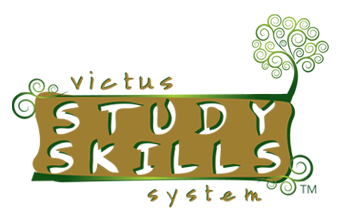The following article is by Brooke Ballenger, a dedicated educator and one of our Victus Study Skill System instructors. Brooke’s message is a valuable one for teachers and parents who are engaged in the process of helping students learn. This is what it is all about.
One of the greatest joys of an educator is to witness a magic moment. It usually goes something like this: a student makes a statement that may or may not be accurate, and as you challenge them to think it through more fully, they suddenly grow silent. Their head turns to one side, eyes shifting left or right as they process new information. The movement of new found knowledge from head to heart is almost visible. They have made a connection with their own learning.
I remember well my first Victus Study Skills class. It was a sunny, summer day, and the students might rather have been somewhere other than a dimly lit classroom. I pulled out a can of lemonade mix, a cup and a spoon and asked them to list all the steps required for making it. With great enthusiasm they listed all but two—read the directions, and take off the lid.
I asked them how they would make lemonade if they did not know the correct proportions and if they never removed the lid. They probably realized then that this course would be different. Attention to detail matters. Carrying out a task in the proper order carries with it a higher likelihood of success the first time around. And if you leave out important steps, you may never even begin the task.
There was a blond, blue-eyed boy sitting on the front row that week. He was brutally honest about his attitude toward study. He fidgeted in his seat and engaged in every discussion. On the second day, we tackled the second foundational cornerstone of the Victus system, “Where do you want to be?” He was the first to complete his mission statement, and more than eager to confess his true thoughts to the group. “I won’t need any of this because I’m going to be a professional baseball player!” he said with a triumphant smile, rising halfway in his desk and turning to engage his audience. I suspected he was taking a bow in his imagination.
I smiled back and leaned my elbow on the podium. We locked eyes. “So where will you play baseball these next few years?” I asked.
“In school,” he replied.
“And do you know what the steps are to qualify for playing baseball in school?”
“You have to be a really good baseball player, and I am!” he said. “I practice with my dad every day.”
“Yes, and what else do you need to do?”
He didn’t know. So I asked, “What kind of grades do you have to have to stay on the team?”
He hadn’t thought of that. “Oh,” he replied, looking back at his workbook where he had jotted down his mission statement.
“And do you want to apply for a college scholarship?” I asked.
He hadn’t thought of that either. So I asked him if he realized that he would have to make good grades in college to stay on the team there, too.
“I do need this.”
And that was the moment. His eyes shifted to one side, he thought for a millisecond, and then with as much enthusiasm as he’d shown when he declared he did not need any of this, he twirled around in his desk to face the class and said, “I do need this!”
With that, he planted himself in his seat and clamped his arms around his workbook. For the rest of the week, he helped lead the class in an exploration of how to answer three foundational questions: where are you now, where do you want to be, and how do you get there?
Few topics give me greater joy than teaching students to answer these three questions and to fill their toolbox with the instruments they need to get where they want to go. When I make these vital life skills real for them, I am helping set them up for success in their personal lives and their academic and professional careers.
I am a foreign language teacher in a middle school and a high school. This unique vantage point exposes me daily to the ideas and attitudes of 10- to 18-year-olds. Far too often, my students tell me they have never been taught a systematic way to study. I hear it in middle school, and I hear it in high school. Their knowledge is random, and they are overwhelmed.
“…we fail them…if we do not give them the tools they need…”
A system of study ordered by the three guiding questions of the Victus study skills course helps students anchor themselves in the midst of the madness. School life is hectic, and I often wonder how they manage seven classes a day at the high school level. The truth is, most of them do not, and we fail them as educators if we do not give them the tools they need to be successful managers of the responsibilities we place on them. Yes, they must read the directions and take up the tools, but we must do it with them and show them how. We would not give a child a hammer without first showing them how to use it and making sure they were equipped to use it. Study skills are no different.
Every day the teachers in my district are required to write “Guiding Questions” on the whiteboard. These questions guide the lesson, helping students focus on the skills they should master that day. Have we written the most important guiding questions on the whiteboard of their heart?
We learn best when we have to teach someone else what we know. Perhaps if we as adults take the time to guide our students into the discovery of how to answer these three questions, we may also answer them more accurately for ourselves. Every time I teach this course or write material for it, I am reminded of the steps I need to take, or steps I have left out and need to retrace. The truth is, this system is not just for our students. It is life changing for us as well.
A wise man I used to know often said, “There is a truth, and there is another truth.” What he meant is that to discover the big picture of what is true, we must continually add to our knowledge of all of the working parts. If we leave one out, we may not have an accurate view of where we are or where we want to be.
And here is one truth you can count on: you make better lemonade when you know all of the steps right from the start and follow them. And don’t forget to take off the lid!

